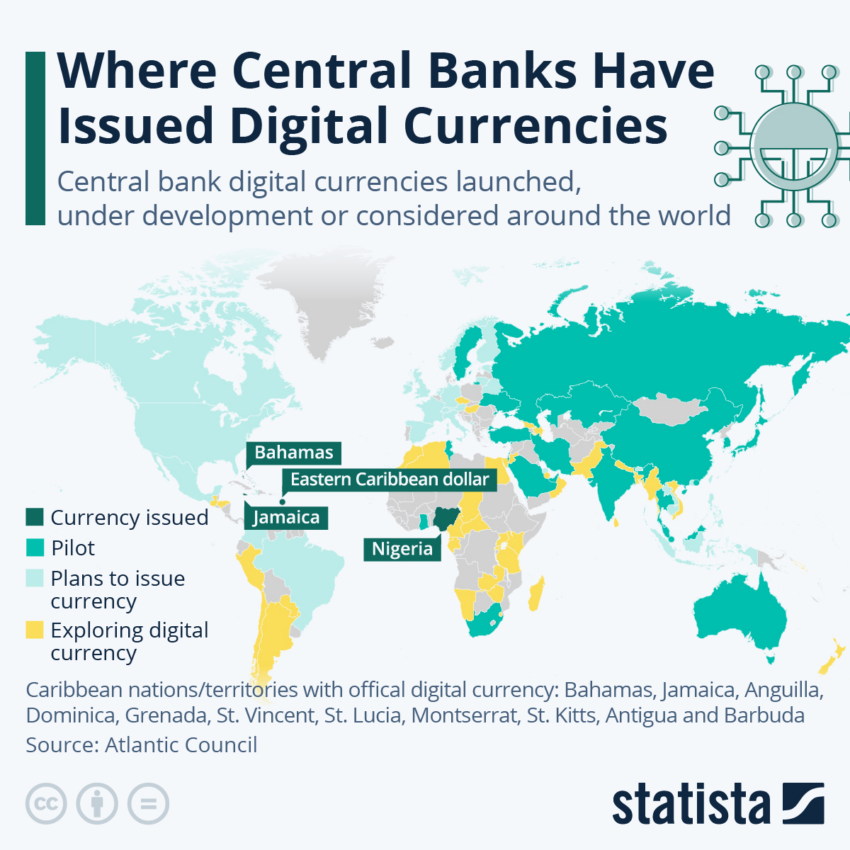This is How Singapore Plans to Fix CBDC Interoperability

[ad_1]
The Monetary Authority of Singapore (MAS) is pioneering a revolutionary solution, Purpose Bound Money (PBM), to address the problem of central bank digital currencies (CBDCs) interoperability.
Under the MAS’s Project Orchid, PBM has been proposed to tackle the increasing fragmentation in the global monetary landscape, where different forms of digital money compete for dominance.
Purpose Bound Money and CBDCs Interoperability
Purpose Bound Money represents a leap beyond programmable payments and programmable money. It refers to a protocol that sets out the terms to use an underlying CBDC.
Functioning akin to a voucher, only under specific circumstances the CBDC is redeemable. Yet, once released to the merchant, it becomes unrestricted, potentially functioning as an escrow-like solution between buyer and seller.
The standout feature of PBM, however, lies in its cross-platform interoperability. As different digital asset developments lead to an array of ledger technologies and monetary forms, PBM could emerge as a bridge across this divide.
“Purpose Bound Money, as a concept, is becoming more and more needed as different pilots and developments are leading to a fragmentation,” highlighted Francesco Burelli, partner at Arkwright Consulting.
The theoretical underpinnings of PBM were unveiled in a technical whitepaper published by MAS in collaboration with international and private sector partners. The whitepaper outlines the proposed architecture and lifecycle of PBM, marking a significant advance in the nascent technology.
In essence, PBM incorporates an underlying store of value, acting as collateral, and a “PBM Wrapper,” which defines the intended use through a smart contract code. This design resembles the wrapping process in cryptos, which enables the use of tokens across different blockchains.
“PBM is actually a wrapper. It’s wrapping the store of value. No one else out there is actually thinking about this [in traditional finance] but wrapping is a very common concept in crypto,” said Kenneth Bok, managing director at Blocks in Singapore.
Singapore CBDC: Financial Inclusion Is a Must
MAS’s plan is ambitious. It could enable a co-existence of private currencies, such as tokenized deposits and stablecoins, and CBDCs. Additionally, it could empower the financial system by promoting convenience, efficiency, security, and trust.
This design aims to foster financial inclusion, streamline transactions, and spur economic value. These are essential characteristics central banks must achieve with their CBDCs, according to the International Monetary Fund (IMF).
“Adoption of CBDC is critical for central banks to achieve policy objectives such as promoting financial inclusion and complementing declining cash use. Learning from past payment innovations and investigating incentives for adoption should play important roles in CBDC design,” affirmed Tao Sun, senior economist at the IMF.

The idea of PBM is currently under experimentation on an e-commerce use-case by industry giants. These include Amazon, DBS Bank, and Grab.
Sopnendu Mohanty, chief FinTech officer at MAS, sees this collaboration as a testament to MAS’s innovation-focused. Indeed, he believes this joint effort will boost transaction efficiency and improve the role of CBDCs in future finance.
“This collaboration among industry players and policymakers has helped achieve important advances in settlement efficiency, merchant acquisition, and user experience with the use of digital money. More importantly, it has enhanced the prospects for digital money becoming a key component of the future financial and payments landscape,” said Mohanty.
It is worth noting that as PBM remains in its infancy, it is not immune to challenges. Privacy and security concerns remain paramount, as do potential vulnerabilities in code and logic design.
Disclaimer
Following the Trust Project guidelines, this feature article presents opinions and perspectives from industry experts or individuals. BeInCrypto is dedicated to transparent reporting, but the views expressed in this article do not necessarily reflect those of BeInCrypto or its staff. Readers should verify information independently and consult with a professional before making decisions based on this content.
[ad_2]
Source link

